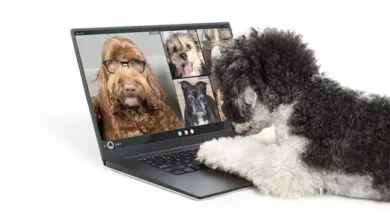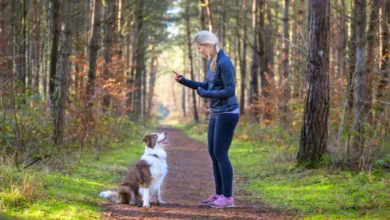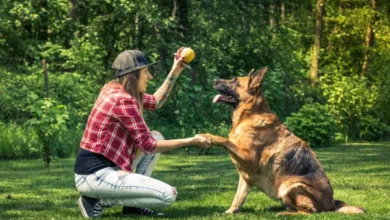
Good leash walking skills can be one of the most challenging things to train a dog. Today we’ll see where inertia is on this critical skill. I’m Richard Hayes. I train dogs, this is my new dog, and I’m going to show you how I trained him from day one. Things definitely won’t always go smoothly. You can start from the beginning, or you can pick it up anywhere.

There are many reasons why dogs pull on the leash, but it can be difficult to know what is causing this behavior. Over time, if not appropriately addressed, pulling on the leash can lead to other behavioral issues such as aggression and anxiety. Luckily there are ways to train your pup so that he or she walks nicely by your side! Here are some helpful tips for teaching your dog how to walk without pulling!
Read More:
- Everything You Need to Know About Brushing Your Dog
- 13 Must – Know Tips for New Dog Owners
- How to Teach Your Dog & Cat to Get Along
- 10 Ways to Groom Your Dogs
- Dogs Are Great for Retirement — Here’s Why
Before You Start
- You need to ensure that your dog has an appropriate collar and leash.
- When you first start training your dog, make sure you give them treats or something good like that.
- A marker is essential for good behavior; it can be anything that you find helpful. A clicker or an emphatic “yes!” works well as a way of rewarding your dog when they do something right.
- Dog Leads: Extendable dog leads are long so that you can walk more. They are suitable for dog walks. Short city leads are not as long, but they allow you to have more control when walking in town.
#1: Begin With Short, Positive Sessions
Begin leash training with short, positive sessions. Most people teach their dogs to walk on the left side of them when they walk. But if you don’t want the dog on your left, you can train them to go on the right side too. It’s a good idea to teach them one way or another so that they don’t trip you as they run back and forth while you’re walking.
#2: Teach Him to Walk by Your Side
Your dog needs to stay on one side of you. If your dog is constantly weaving back and forth or running in circles, your walk will not be much fun. You may trip and hurt yourself or your dog. Follow these steps if they do this:
- Keep the leash for your pet so that he stays close to you and cannot easily leave your side and be in a position where you want him to stay. Please do not keep it so tight that you are pulling him.
- At the same time, lure him into the correct area by your side with small treats. You can mark the behavior and use a word or clicker if you want to be fancy!
- Stop luring when your dog starts to get the idea that you want him to walk by your side. But give your dog a treat every few steps at first. Then increase the distance between the treats until he develops a habit of walking at your side without treats. You can also give your dog more space if he doesn’t wander off or circle around.
#3: Make It Clear It’s Your Walk
It is your walk, and you should decide when to move forward or stop, not your dog.
Do not start moving until your dog is calm and the leash is loose. Start at the front door, not once you’re outside. You want your dog to understand that you are the one who makes decisions about when to stop, where to go, and how fast we will be going.
# 4 : Don’t Walk Behind Your Dog
Dogs are naturally subservient, and they don’t walk in front of their pack leader. When your dog walks by your side, it means they trust you and respect you.
Don’t walk behind your dog; it puts them in charge and often leads to anxiety or problem behavior.
#5: Your Dog Needs Time To Sniff And Relieve Himself
When you are practicing your leash walking with the dog, make sure to give him a break every five minutes. Instead of giving food rewards during these times or letting him sniff around as he likes (which is also something we want), say something like “go potty” and have him go outdoors for an honest-to-God squat!
#6: Keep The Leash Short But Loose
Pulling on a dog’s leash is never good, but it can be counter-productive. If you pull your canine companion back and then try to force them into position, they often get more worked up or upset than before, and they pull harder. This type of reaction has come to be known as opposition reflex!
Leash correction is a good idea, but they should be ‘short and sharp’ so you can command your dog “don’t pull” without making your dog feel like their leash is constantly being pulled. If a correction seems necessary for the sake of teaching an obedience command or otherwise training purposes, then make sure it’s only temporary before releasing from tension immediately afterward to avoid injury!
#7: Give Him More Freedom
When your dog learns the basic skills, he is ready for more freedom. Put a long line on him so that he can move away from you and explore the distractions. But you will still be connected to your dog because of the long line. If he does not listen, pull on it and make him come back to you quickly.
Even though this leash is long, I don’t expect him to pull on it. If the leash goes tight, I add pulses and ask him to come back. The nice thing about using a long line is that I can give him more space by stepping back or moving to my left-hand side when needed.
Conclusion
The momentum of your dog’s body is a powerful force that can be difficult to stop. We hope this blog post has helped you better understand the concept of inertia and how it applies when walking a leash, so you can have more control over your furry friend in no time. Have any questions for us? Let us know! Our team would love to help answer them or even walk through some training exercises with you if needed.



